
Trap Foods - Snacks


Share on:
Note
The following is an excerpt from my post ‘Healthy’ Trap Foods, in which I made a detailed list of foods that I believe to deceptively unhealthy. I’ve broken that list down into easier to digest categories based on what food they are. Linked below are all the individual posts:
- Trap Foods - Breakfast
- Trap Foods - Drinks
- Trap Foods - Fruits & Veggies
- Trap Foods - Grains
- Trap Foods - Meals
- Trap Foods - Savory Sauces
- Trap Foods - Snacks
- Trap Foods - Sweet Spreads
Introduction
I wanted to put together a list of foods that people consider to be healthy, but are really just either a product of good marketing or misinformation. These foods are typically referred to “Trap Foods”, or “Fake Healthy Foods”, as they can lure customers into thinking they’re making better decisions, when in realty these “healthy” alternatives can be just as bad, if not worse.

TLDR (Too Long; Didn't Read)
- Extensively read ingredient labels
- Avoid ultra processed foods, especially ones containing refined sugar, refined grains, and vegetable/seed oils
- Don’t believe marketing claims
- Prioritize nutrient dense whole foods or minimally processed foods

Disclaimer
I’m not saying you should absolutely never eat any of these foods. Moderation is key, and the dose makes the poison. Most of the foods on this list are treats, and should be treated as such, but it’s healthy to enjoy treats every once in a while. Don’t eat them all the time, but don’t forbid yourself from having anything. Find a proper balance.
List of Foods
- Granola Bars
- Trail Mix
- Nuts
- Dried Fruit
- Yogurt
- Pretzels
- Crackers
- Chips
- Popcorn
- Keto, Vegan, Gluten Free, and Organic Snacks
- Protein Bars and Snacks
- Rice Cakes
- Muffins
- Banana Bread
- Dark Chocolate

Granola Bars
Oatmeal flows us nicely into granola bars. Usually thought of as a healthy boring snack, these are actually much worse than they seem. Granola and granola bars are loaded with added sugars; just 1 Chewy Chocolate Chip Granola Bar has 7 g of added sugar in a 24 g serving. Do you know what else has the same amount of added sugar? 2 Chips Ahoy cookies. The vast majority of bars on the market contain sugar (or some type of sugar) as one of the first 3 ingredients on the label, making them a dessert.
Don’t think Nature Valley, Nutrigrain, Kind Bars, or Clif Bars are any better. I will say I used to be a huge fan of all 4 of these, and Clif Bars in particular serve a purpose. On a long hike or after a hard workout, the simple sugars in Clif Bars are actually exactly what your body needs to replenish energy, and the protein aids in recovery. Just don’t eat them as a day to day snack. If you want your own homemade granola or granola bars, you should check out my Low Sugar Granola and my Peanut Butter Banana Granola Bars, which only use a minimal amount of sweetener, and no refined fats or oils. Just nuts and oats!
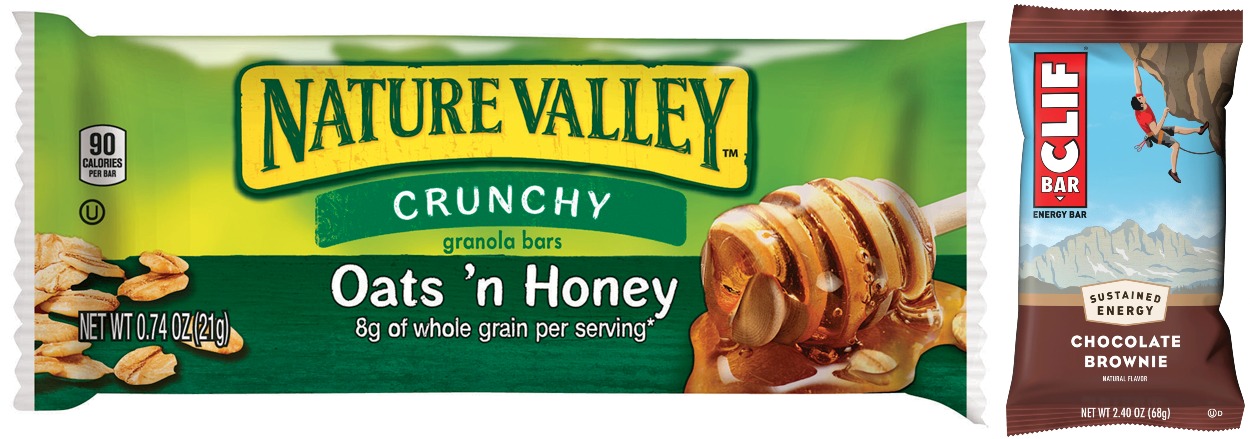
If you’re going to get a bar, I’d recommend either Larabar or RxBars (or my own Copycat Chocolate RX Bars); both are made with dates and nuts, and contain no added sugar or artificial sweeteners. RxBars even have some protein powder as well.
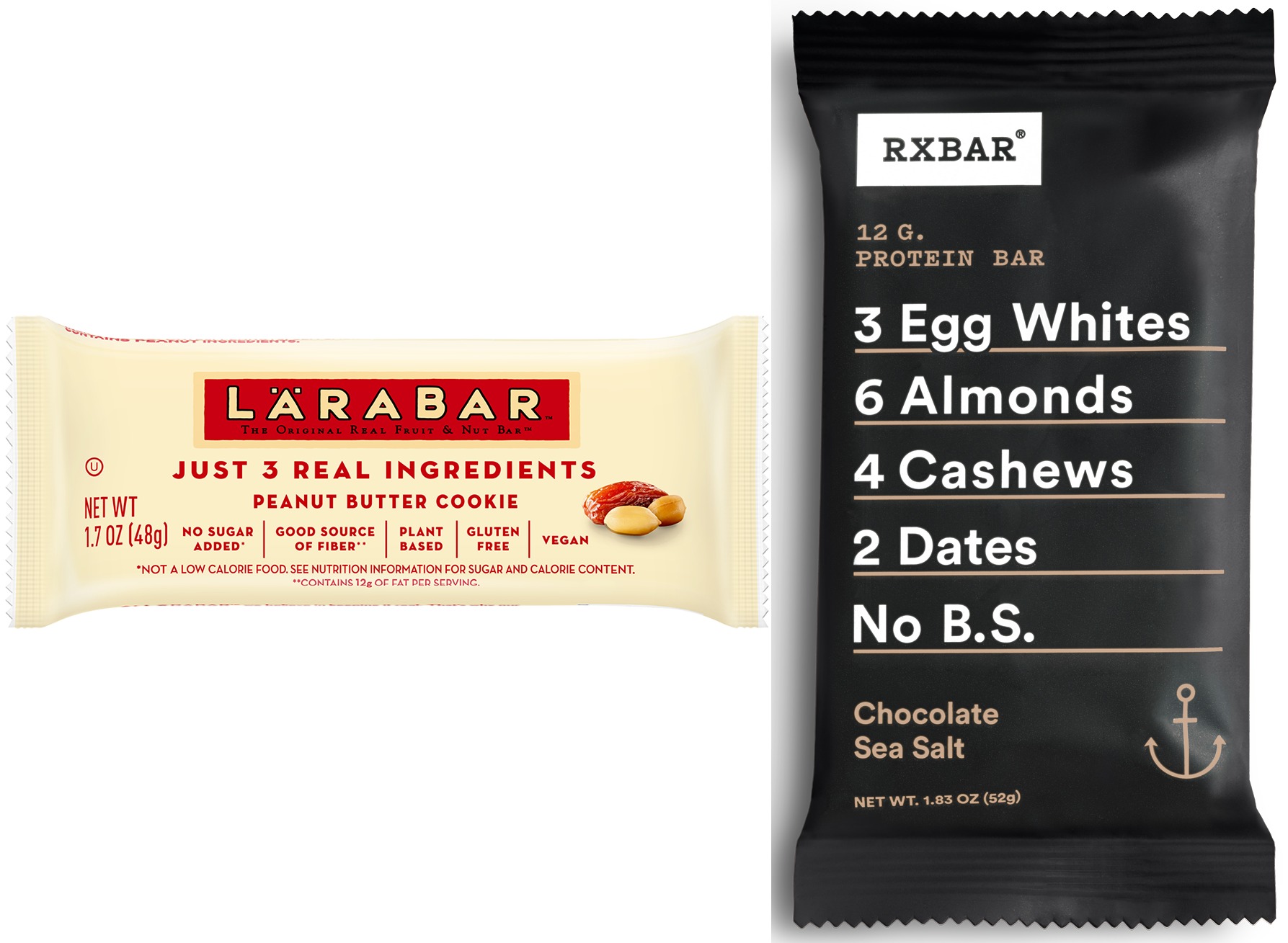
Trail Mix
Trail mix is the next step from granola, where you essentially just remove the oats, and instead have a mix of nuts and candy. Nuts are healthy, but can be easily overconsumed. But the main problem with trail mix is the chocolate chips or M&Ms. Trail mix can be a great snack, especially when on a trail (duh), where the salt, fat, and sugar are great for when you’re out exercising.
But don’t be fooled into thinking it’s healthy just because it contains nuts, just like how granola isn’t healthy just because it contains oats. Look out for the chocolate and dried fruit. A lot of trail mixes can contain a surprising amount of added sugar. Plus, it’s very high in fat and calories, so it’s very easy to overeat. The numbers below might not look like a lot, but that 1/4 cup (38 g) serving is a lot smaller than you think; most people can easily have 2-3 times that amount no problem.

If you really love trail mix, you should consider making it yourself. It’s cheaper and healthier, as well as dead simple. Just mix together nuts, dark chocolate, and unsweetened dried fruit in a bag, and you’re done. You can check out my Mixed Nuts and Chocolate Trail Mix for a easy typical trail mix, or my Air Fryer Trail Mix for a roasted varation with nuts, bananas, and chickpeas.
Nuts
Nuts, just like oats, can be a very healthful addition to your diet, or they can be the end of it, depending upon how they’re prepared and consumed. Nuts are rich in antioxidants, healthy fats, fiber, selenium, manganese, and contain a fair bit of protein. They can also help in raising your HDL. The problem is that nuts are insanely calorically dense (similar to real dark chocolate). They’re very high in fat, where just a 1 oz (28 g) serving contains about 160 calories. Calories aren’t everything, and fat is essential for you, but just don’t overdo it on nuts (as I tend do to).
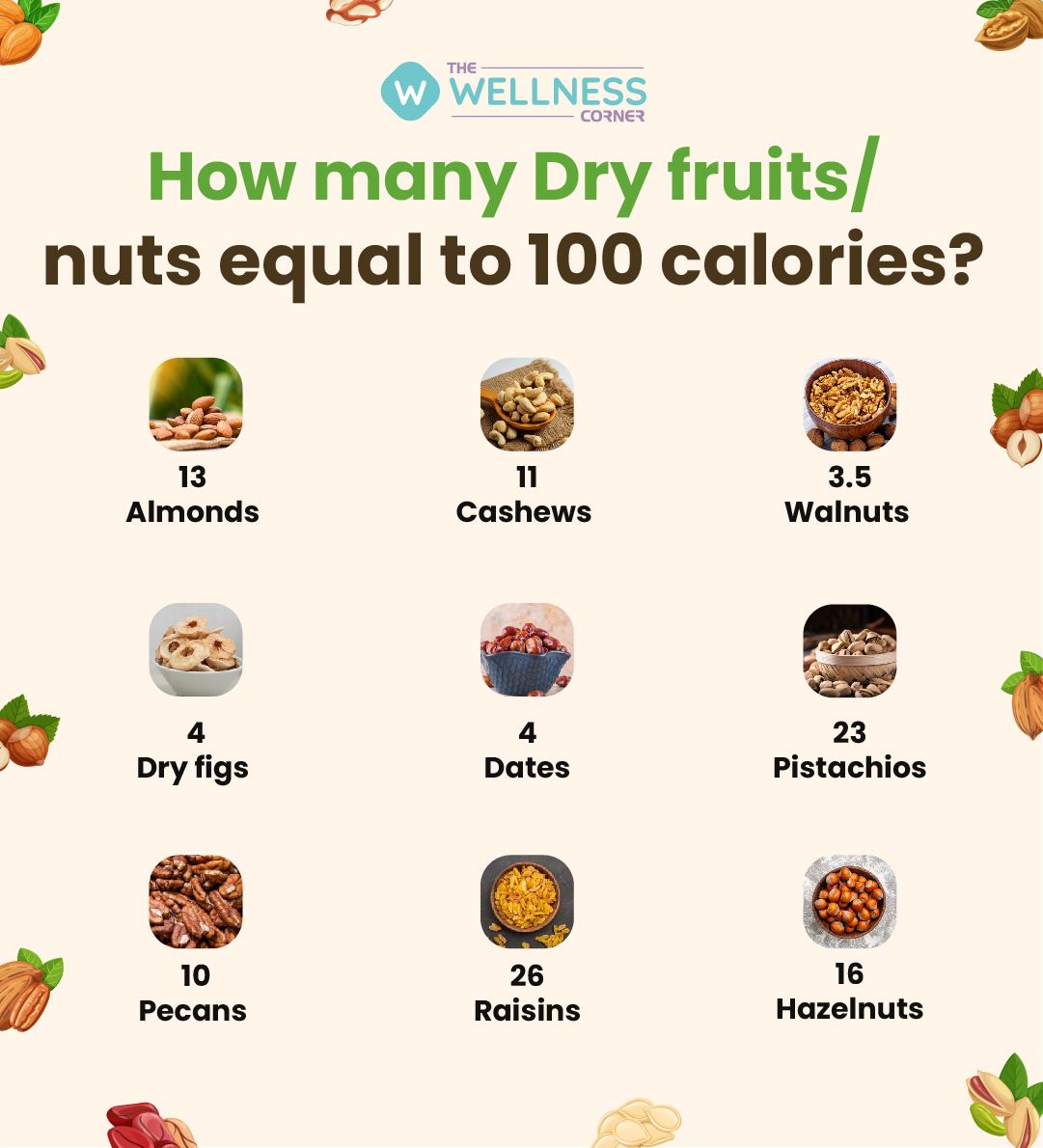
Additionally, make sure to get plain nuts. Ideally, your nuts are dry roasted; either unsalted or lightly salted are okay depending on your tastes and salt intake. Just stay away from flavored nuts, like honey roasted peanuts or candied pecans. These contain lots of added sugars, unhealthy oils, and unnecessary ingredients. Even regularly salted nuts tend to contain a paragraph of ingredients. Stick to just nuts and salt, and always weigh out your serving of nuts. Any more than a handful is probably too much.
Dried Fruit
Dried fruit is a bit of a mixed bag. On the one hand, it’s just fruit with the water removed, leaving a concentrated source of minerals but natural sugars. On the other hand, some dried fruits are pumped full of added sugars. Generally, raisins, dates, dried figs, and freeze dried fruit crisps are pretty good, as all the sugar in these are just from the fruit itself. Dried apricots and prunes also tend to be unsweetened; just look out for the ingredients list. Even though, you should be mindful of your dried fruit consumption, as it’s very easy to overeat without all the water from the whole fruit. Think about how many raisins you can eat in a handful, versus how many grapes you would eat in 1 bite. Just like with nuts, dried fruit can be a healthy addition to your diet as long as your mindful of how much you’re eating.

The bigger problem though comes from dried fruits with added sugars. Dried cranberries, or crasins, are easily the worst offenders here. Have you ever had a fresh cranberry? They’re insanely tart (which is apparently how fruit used to taste before we selectively bred them to be sweeter). Compare that to dried cranberries though. Dried cranberries are entirely added sugar. You wouldn’t think of putting Gummy Bears on your salad. Raisins are nature’s candy, but craisins are just actual candy. Just a 1/3 cup (40 g) serving contains a whopping 26 g of added sugar! That’s already over the American Heart Association’s (AHA) daily guidelines for added sugar consumption for women. Other sweetened dried fruits to be cautious of include blueberries, mangos, cherries, and bananas.
Yogurt
Yogurt, just like milk has the same deceptions. It offers low fat “healthier” varieties that are pumped full of added sugar, and are way worse for you than their original full fat counterparts. Just like with milk, the low or no fat options can also be healthy, as long as they are plain. For me, Plain Nonfat Greek Yogurt is the king of all dairy products. Just 1 serving (2/3 cup, 170 g) contains 17 g of protein, no fat, no added sugar, and just 100 calories. Greek yogurt is also a fantastic source of both calcium and vitamin B12, where 1 serving has 15% and 53% of your daily value, respectively. I opt for the nonfat version, as I don’t taste a difference between that and the full fat variety, so I’ll instead get my fat from other sources, like nuts, chia seeds, or natural nut butter.
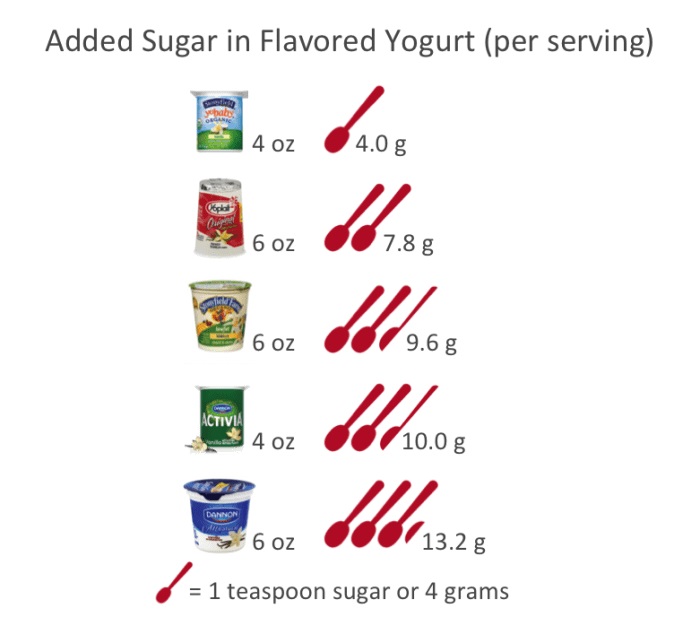
Things start to get worse when you look at flavored yogurt, where Vanilla Nonfat Greek Yogurt contains 13 g of added sugar (remeber, that’s up from 0 g), and less protein (14 g instead of 17 g). Don’t be fooled by the fruit flavors either, even the ones with fruit chunks in them. These contain just as much added sugar as the vanilla, if not more. I used to eat the single serving fruit cup yogurts (like this one) every day in high school, until it started to hurt my teeth to eat it. Only then did I flip it over and notice how much sugar was loaded into these small “healthy” cups. Stick to plain, and add your own fruit and additional sweetner if desired.
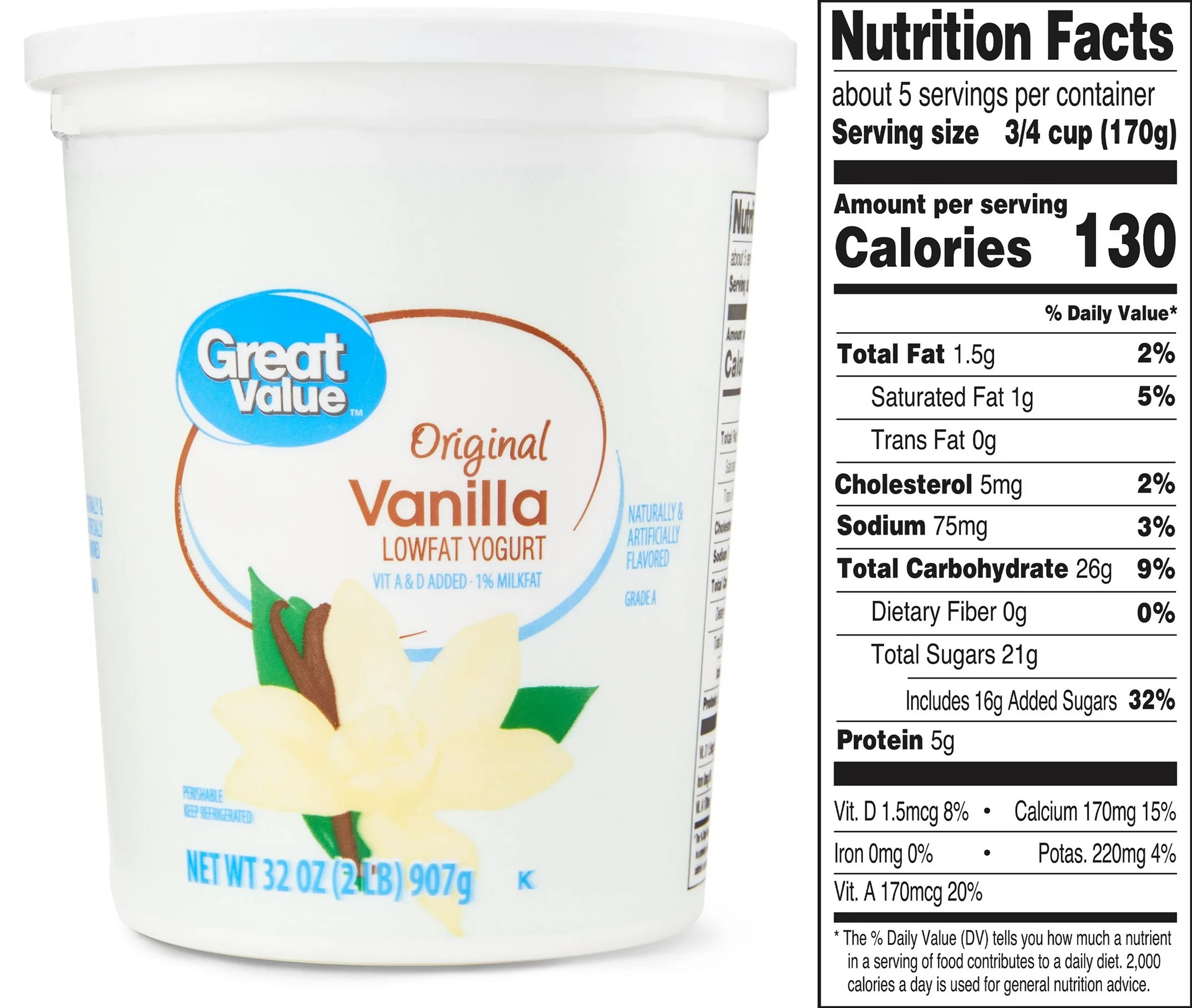
Leaving the realm of Greek yogurt and going to Vanilla Lowfat Yogurt, the added sugar content increases yet again to 16 g, and the protein content is slashed down to just 5 g now. Yopait Key Lime Pie Yogurt was my favorite in elementary and middle school, and unforunately it does not fare any better. At the bottom of the barrel is Go-GURT, but I don’t think anyone thinks this junk could be healthy right?
Pretzels
Let’s leave the world of dairy and move on to snack foods. First on the chopping block: pretzels. I’ll just come out and say it: I was the weird kid who liked getting pretzel on Halloween (everything is probably starting to add up now). I’ve always like fresh baked desserts, but I’ve never been a fan of packages cookies or candy; they’re just too sweet with no flavor.
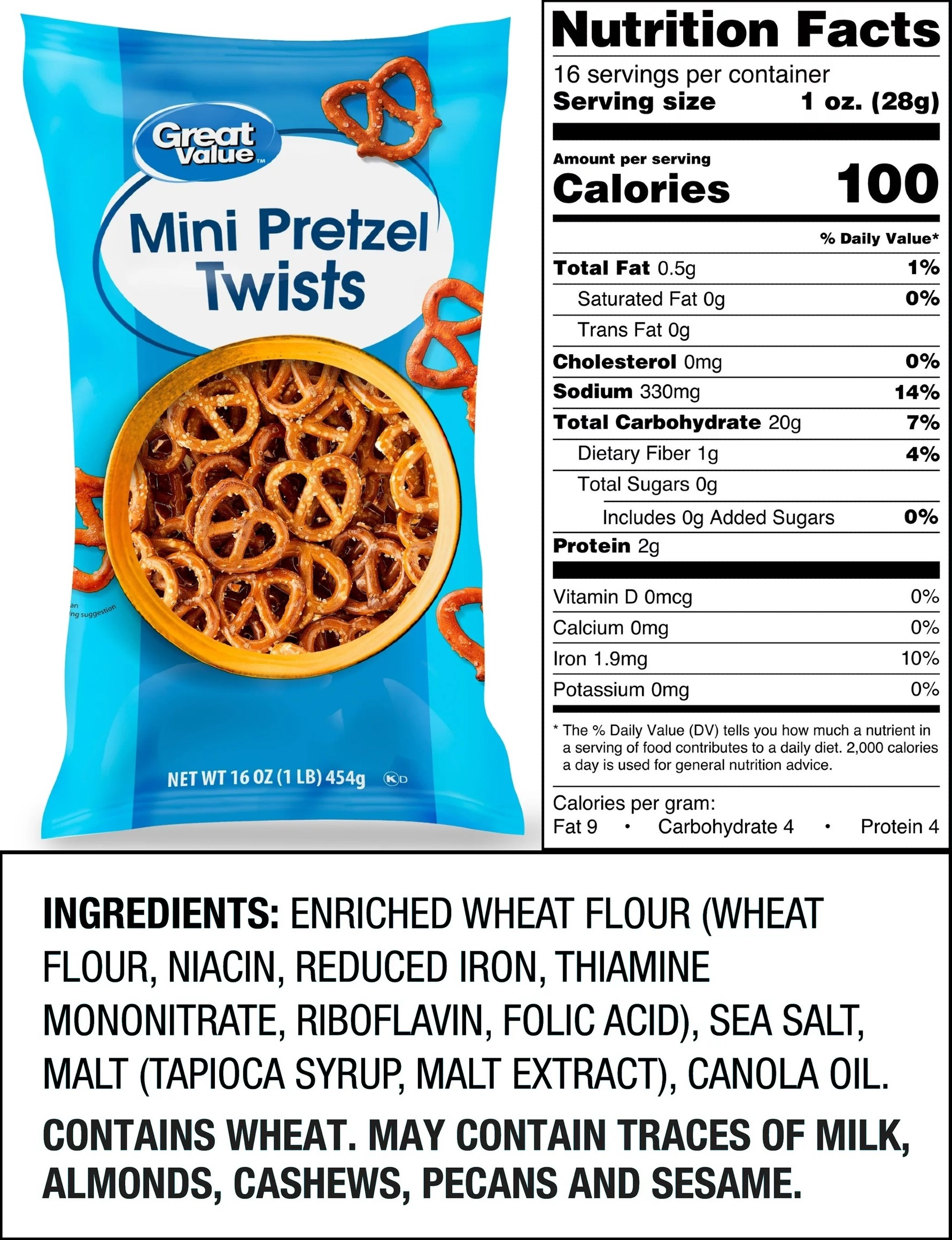
Backstory aside, let’s get back to pretzels. Pretzels are though of as a healthier snack for some reason; I’m guessing because they’re savory instead of sweet. So added sugar isn’t an issue for once; these Great Value Pretzels contain virtually none. The problem is that they’re not much more than an ultraprocessed white flour snack with a ton of salt. The enriched flour is stripped of all it’s fiber and micronutrients, leaving just starch and empty calories. At least they’re low in fat though, unlike crackers and chips. I’ll be honest, I still love pretzels to this day, but they’re still a treat I enjoy in moderation.
Crackers
Crackers we easily my go to snack growing up. Ritz, Graham Crackers, you name it. I even have a recipe for Gluten Free Crackers, that are basically mini healthy graham crackers. I used to have an obsession with Wheat Thins, where in college my friend shipped me 18 boxes for my birthday (thanks Sean, I would eat them every day when I woke up just before running).
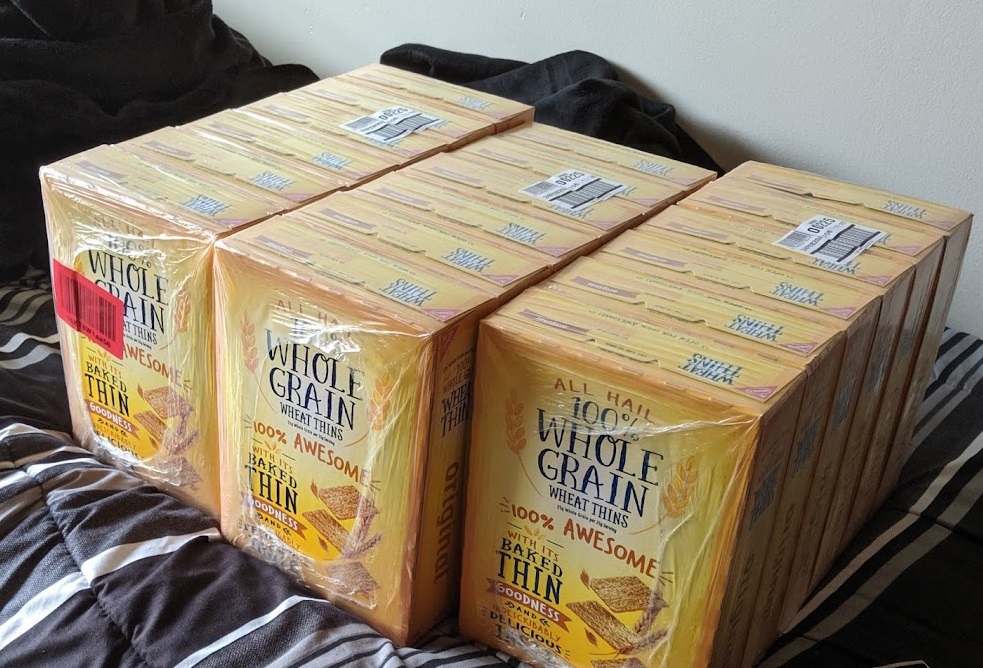
Crackers have the same issue as pretzels though. While being low in sugar, they can just be empty starch calories from refined white flour. Some crackers are also noticeably in both fat (think “butter” crackers like Ritz), or sugar (sweet graham crackers). A serving of Ritz is a measly 5 crackers, with 4.5 g of fat and 3 g of sugar. Graham crackers aren’t any better, where a serving (2 full cracker sheets) has 3.5 g of fat and 8 g of added sugar. My precious wheat things are actually high in both, where just a 16 cracker serving has 5 g of fat (from canola oil) and 5 g of sugar. These don’t sound terrible, but you and I will certainly be eating more than just 1 serving if we’re not paying attention.
Chips
I think everyone can agree that Lay’s Potato Chips or Doritos aren’t healthy. In fact, they’re probably the default junk food snack that people think of, up there with cookies and candy. There are lots of different types of chips though, with tortilla chips being the other main variety. Most would probably also agree that tortilla chips are junk food, so I’m not gonna spend any time here. Any type of chip is going to be relatively low in sugar, but very high in fat and salt.

There are variations of chips that are marketed as being healthy though. These include veggie straws, plantain chips, and banana chips. Starting with Veggie Straws, these are just potato shapes in a different shape, with a tiny bit of dehydrated vegetable. They’re basically the potato chip version of Tri-Color Rotini Pasta; just a fun different color, no more, no less.
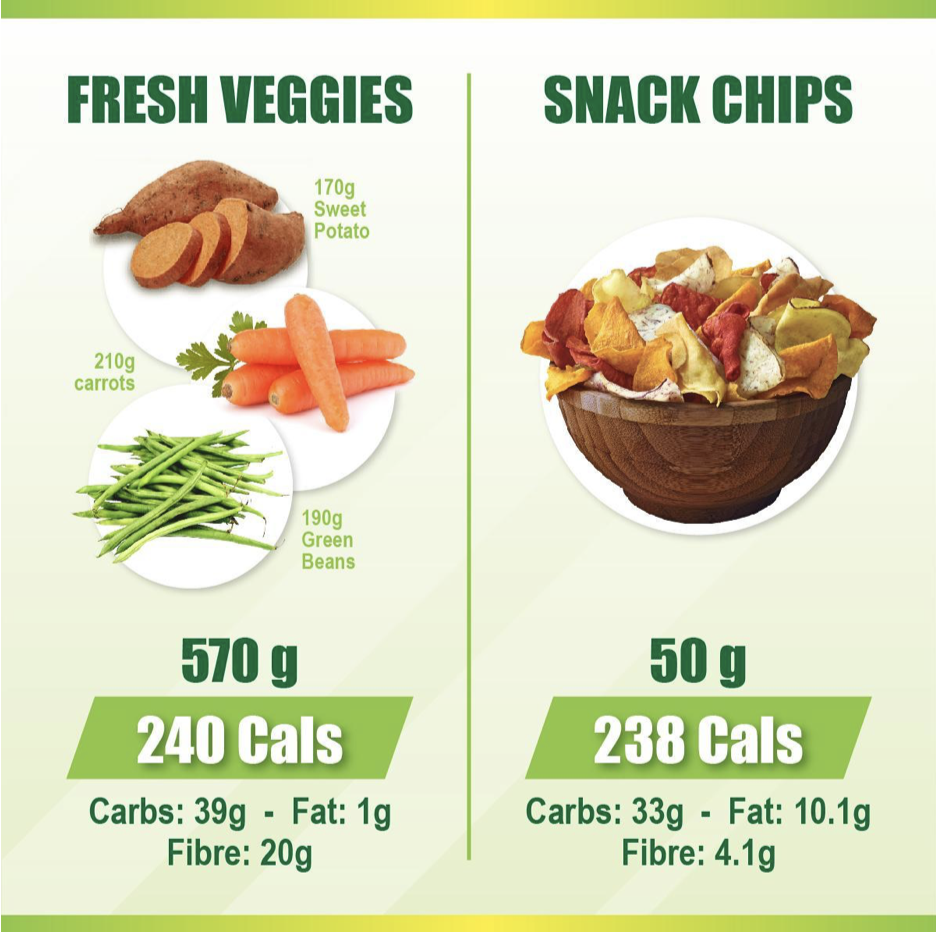
Next up is Plantain Chips. Instead of deepfrying potatoes to make potato chips, these are just deepfried plantains. It’s a starchy vegetable (good) fried in vegetable oil (bad). Both potatoes and plantains are healthy on their own, but can be turned into junk food when prepared like so. Now replace the plantians with bananas, add a little bit of sugar, and you end up with banana chips. These tend to use coconut oil at least, but that’s a mild improvement. If you can, make them yourself, or just eat the whole fruit/vegetable.
Popcorn
This one might actually be the opposite of the others on this list. Most people would associate popcorn with being junk food, eaten with a ton of butter alongside a candy at the movies. But popcorn can actually be a relatively healthy snack with a lot of volume if prepared correctly. Just 3 tbsp (40 g) of unpopped kernels turns into a whopping 7.5 cups when cooked. I’ve never been a personal fan of popcorn (it always gets stuck in my teeth), but I’ve heard that plain popcorn with some nutritional yeast or other spices can make for a very satisfying snack. Yes it’s essentially all carbs with a mediocre amount of fiber and protein, but a full serving actually looks like a lot of food since it’s mostly air. Just make sure to get plain popcorn kernels like the one linked above and shown below.

Just stay away from the microwaveable bags of popcorn. These have a lot of salt, fat (palm or vegetable oils), and preservatives. Additionally, the packaging for microwave popcorn contains PFAS, or forever chemicals, which are linked to many negative health outcomes including cancer and lung problems.
Keto, Vegan, Gluten Free, and Organic Snacks
Despite being very different, most diets work for weight loss and better overall health because they have one main thing in common: limiting your consumption of ultraprocessed junk and focusing on real whole foods. Which is great, until the diet becomes trendy, and companies capatalize on this.
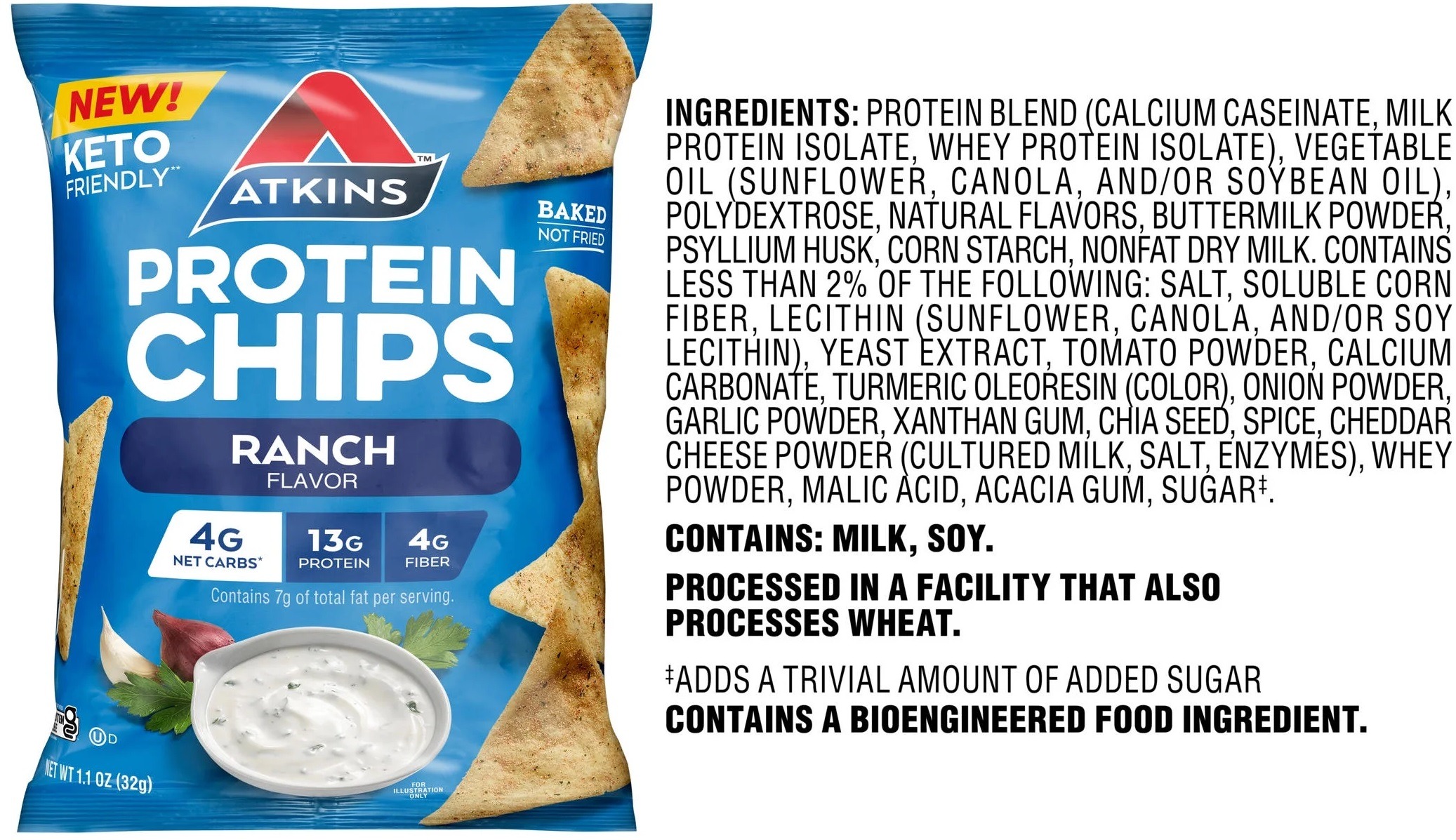
First up is keto. For those living under a rock, a ketogenic, or keto diet is extremely low carb and high fat. This means a lot of oil, butter, nuts, and fatty fish (ooh sounds good), and no high carb foods like bread, rice, pasta, or even beans (whelp nevermind). Keto is the hot and trendy diet right now, with snacks such as cookies, brownie mix, chips, and more hitting the store shelves. These are similar to their original counterparts, with just all the carbs removed. Mainly, they use stevia or erythritol instead of sugar, and almond flour instead of wheat or corn. While maybe being margianlly healthier, these snacks are still ultraprocessed, containing a laundry list of ingredients, with a lot of hydroginated oils, salt, and preservatives.

Many people you have the false notion that vegan = healthy. But you can be very unhealthy on a vegan diet, or very healthy on an omnivorous diet. Not eating animal products does not directly correlate to better health; eating more whole foods does (which vegans tend to do, so that’s a plus). You know what else is vegan though: Oreo’s, Coca-Cola, and Sour Patch Kids. I think you get my point. Even the supposedly healthier snacks (like these Nature’s Bakery bars) are just expensive and fancy looking versions of the original products, and are at best only marginally better for you.

At least (most) people have a good reason for following a strict gluten free diet, with that being Celiac disease. Gluten comes from grains such as barley, rye, and of course wheat. It would be assumed then that a gluten free diet would be healthier then, omitting all sources of flour, thus eliminating any ultraprocessed “foods” containing it. But there’s still plenty of junk food that’s naturally gluten free (pretty much all chips are), and some specifically made to be gluten free. You can still get gluten free cookies like Oreo’s and Tate’s. Fine treats to have on occasion (everything in moderation, remember), but don’t fool yourself into thinking it’s healthier because it contains no gluten.

Finally, and probably worst of all, we have organic. Why is organic the worst? Because it’s the most ambiguous. All the other categories above (keto, vegan, and gluten free) have hard set criteria for what is and isn’t allowed. Organic though: can anyone actually define what that means? Why do Doritos and Tostitos make organic chips? What are you really doing here lmao.
Protein Bars and Snacks
As I said in my 100 Calorie Protein Bars, a protein bar needs to have at least 10 g of protein per 100 calories, and have no added sugar. Otherwise, it’s not a protein bar. I love RxBars, but I wouldn’t consider them a protein bar (not even my own Copycat Chocolat RX Bars). They’re still a healthy snack certainly, with good doses of healthy fats (nuts), natural sugars (dates), fiber (dates and nuts), and protein (egg white protien powder). I’m ripping on RxBars here, but only because they’re probably the best protein bars on the market; it pretty much just gets worse from here.

Most other protein bars and snacks on the market contain vegetable oils, added sugars, and a slew of other weird ingredients. They also have very high contents of other macro nutrients; I want a protien bar, not a fat bar or a carb bar. Protein bars can be a great lean snack, and I can always add more fat (peanut butter) or carbs (banana) along side it. Just because it has the word “protein” on it doesn’t mean it’s healthy, or necessarily even high in protein. Some examples are Great Value, TruBar, Nature Valley, Gatorade, Clif Bar, Kind, and Kellogg’s. All of these protein bars fail to hit those requires, with low protein contents and added sugar ranging between 5 g and 24 g per bar.
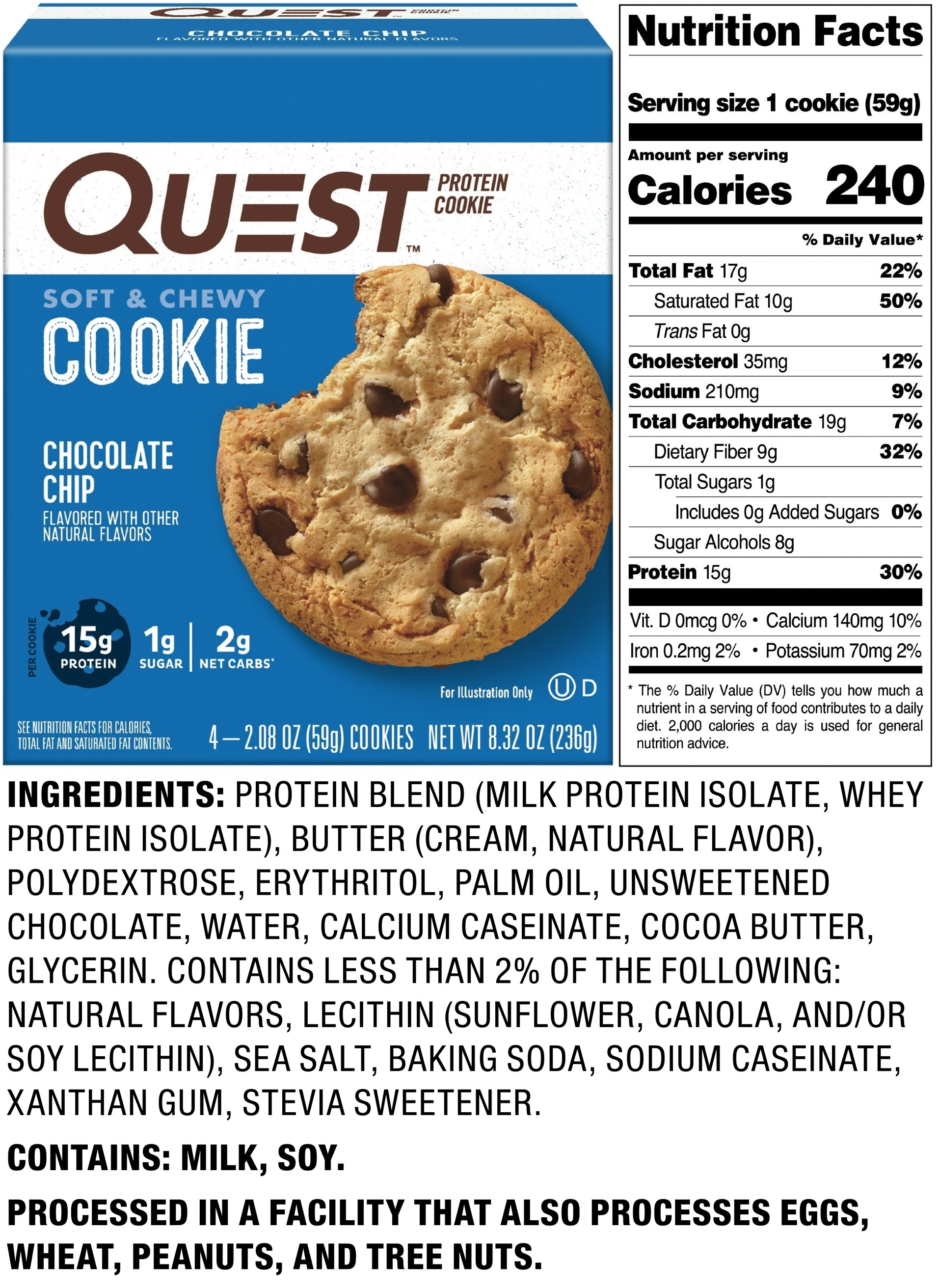
It’s not just bars; other protein snacks are just as guilty. If it seems too good to be true, it probably is. The following examples either come close or actually meet the protein bar requirements, but they’re still ultraprocessed snacks to enjoy in moderation; not a building block of your daily diet. I’m talking about protein cookies, chips, and pastries. A good general rule of thumb is if there are multiple lines of ingredients, or ingredients you can’t pronounce, you probably shouldn’t be eating it often. Look for foods with just a handful of real, whole food, ingredients (we’ve come back full circle to RxBars).
Rice Cakes
Rice cakes just scream 1990’s low fat craze to me. They’re basically all carbs and starch, but they’re super light and airy; 1 whole rice cake weighs just 9 g and contains only 35 calories and 7 g of carbs. They can be a great way to get some more carbs into your diet without going overboard like most snacks. I’ll be honest and say have some Lightly Salted Rice Cakes in my cabinet right now.
They’re super customizable; think anyway you’d enjoy toast, you can do as a rice cake. Rice cakes are a great base, and you can easily top with some healthy fats (nuts or avocado), protein (yogurt or cottage cheese), or fruit (berries, bananas, apples, etc.). Some sweet examples are:
- Natural Nut Butter with sliced banana
- Homemade jam (either Low Sugar Berry Jam or Strawberry Chia Jam) and nuts
- Cottage Cheese Peanut Butter with blueberries
- Roasted Hazelnut Nutella (SF) with sliced apples
- Strawberry Mint Protein Pistachio Butter with sliced strawberries
- Chocolate Banana Protein Peanut Butter with sugar free chocolate chips
- Cranberry Protein Almond Butter with raspberries
- Banana Bread Hummus Spread with toasted oats
- No Sugar Added Apple Spread with pumpkin seeds
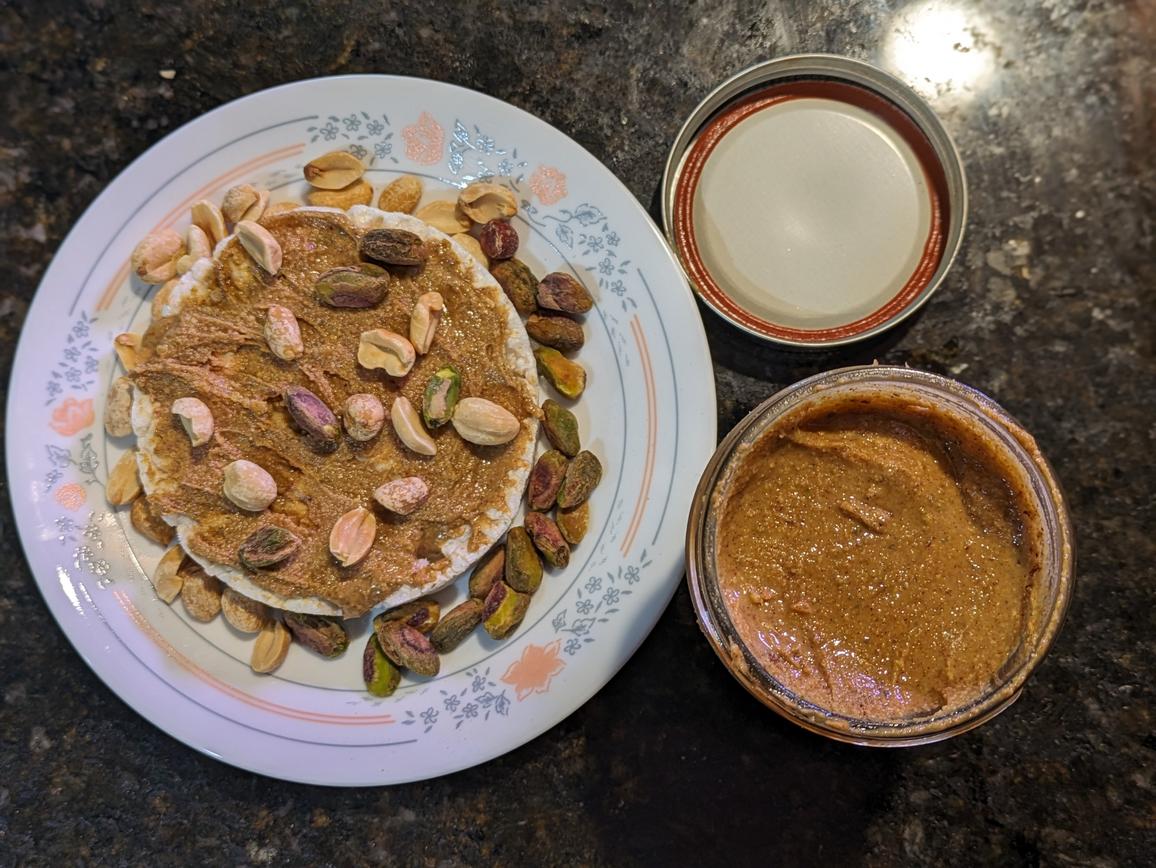
You can make them savory too; sometimes I mix some plain nonfat greek yogurt or Holy Guacamole with some spices, and top with sliced tomatoes, cucumber, or any other fresh produce in my fridge at the time. Or you can just simply spread on some hummus. Here are my homemade hummus recipes:
- Classic Tahini Hummus
- Creamy Pesto Hummus
- Roasted Red Pepper Hummus
- Cheesy Garlic Hummus
- Golden Sweet Potato Hummus
- Mediterranean Roasted Eggplant Hummus
- Creamy Roasted Beet Hummus
- Ginger Lime Black Bean Hummus
- Lemony Taco Inspired Hummus
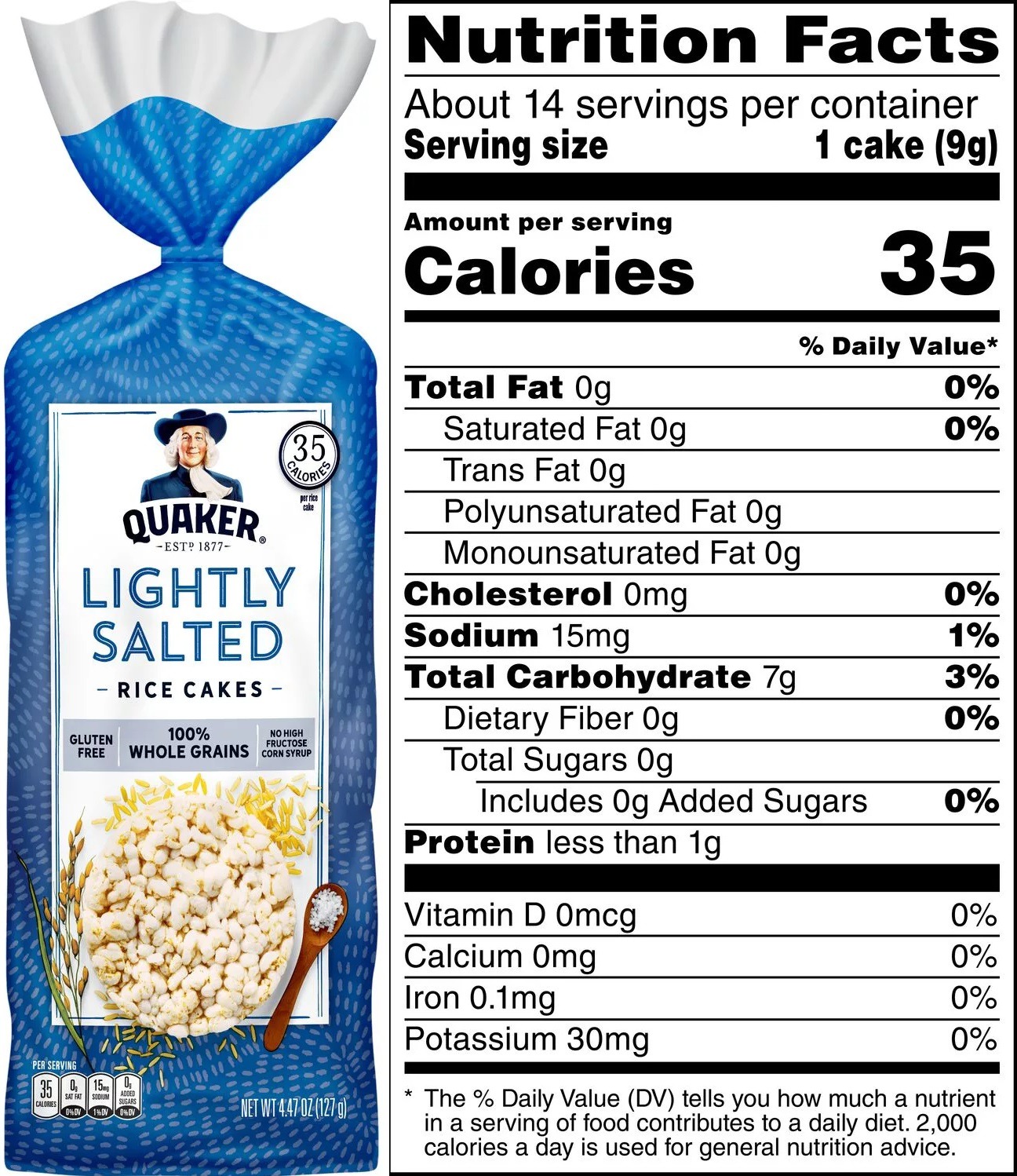
As with most things, make sure to get the plain variety. The lightly salted ones contain nothing but brown rice and salt, 2 healthy ingredients. The problem comes with the flavored rice cakes, like Caramel, Chocolate, or White Cheddar. Calories can double, sugar is added, and the ingredients list expands.
Muffins
Muffins are unfrosted cupcakes that somehow get a pass as a breakfast food. These Blueberry Muffins have 350 calories per muffin with 21 g of added sugar and 17 g of fat. They’re filled with a ton of ingredients, and contain almost as much sugar as flour. I used to make muffins decently often (banana chocolate chip specifically). Just take a look: 1/2 cup of vegetable oil and 3/4 cup of sugar, as well as 1.5 cups of white flour, for just a dozen muffins. If that sounds like a lot, that’s because it is. Most “breakfast” options are just a meal of dessert. Which is fine in moderation if you know what you’re getting yourself into. A muffin can be a fine dessert on occasion, but is a terrible start to your day. Sorry, but a Triple Chocolate Muffin is just a brownie.
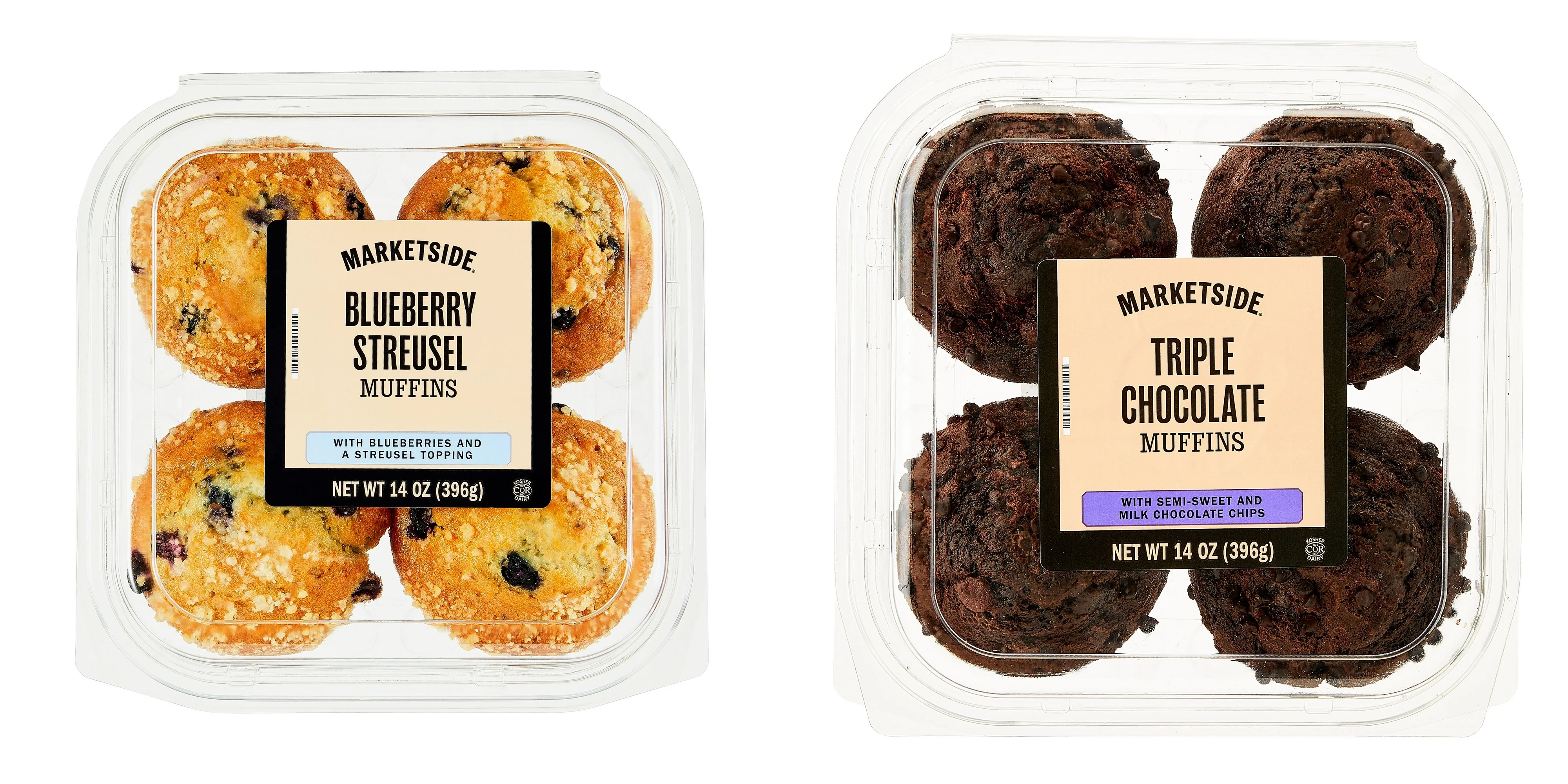
As for healthier homemade versions, you should check out my Sweet Potato Banana Muffins, Oatmeal Banana Mini Muffins, or my Peanut Butter & Jelly Muffins.
Banana Bread
So take muffins, mash some bananas into it, and bake it in a loaf pan. What you end up with is banana bread. A delicious cake, no doubt, but not a breakfast, bread, or a healthy snack. Just because it has bananas or nuts doesn’t make it healthy; it’s still a dessert. At least this one below is honest and refers to itself as a cake.
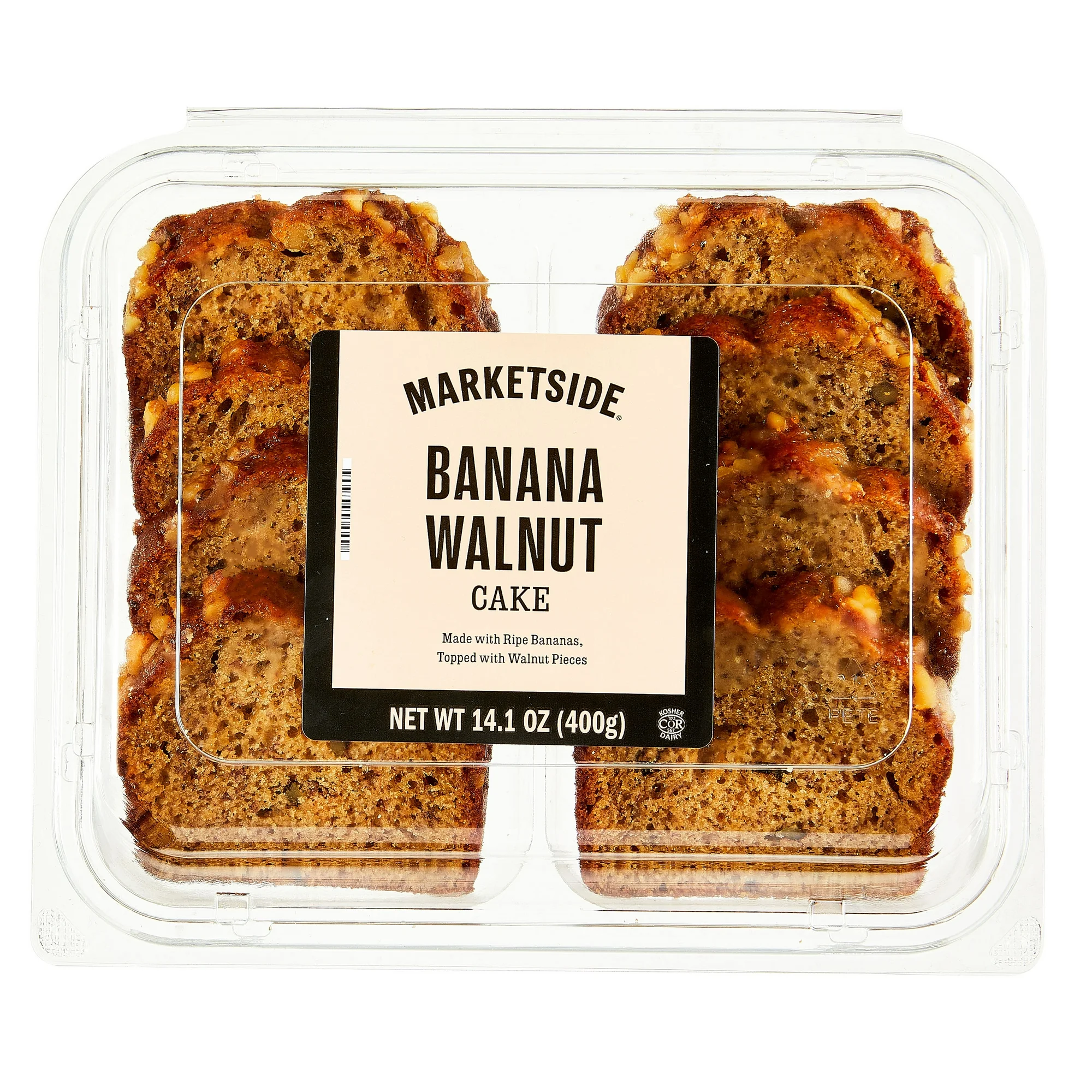
As for healthier homemade versions, you should check out my Protein Banana Nut Bread or my Double Chocolate Banana Bread.
Dark Chocolate
Dark chocolate is one of those foods that people think is healthy, but they’re probably eating the wrong variety. Just being labeled as “dark” chocolate doesn’t automatically make it good for you; a lot of it is just well marketed candy. Let’s start with the benefits though. True dark chocolate is rich in fiber, iron, mangesium, copper, and manganese. Cocoa is also a great source of antioxidants, which decrease your body’s free radicals and lower inflamation, due to its high concentration fo flavanols.
Dark chocolate is also a good source of healthy fats, though this can make it quite calorically dense. True dark chocolate is a healthy snack, but, just like nuts, should be measured and enjoyed in moderation due to its high calorie content.
Here are a few examples of some chocolates that are wrongly considered healthy. This Dark Chocolate Sea Salt Caramel bar has sugar as the first ingredient. This isn’t a healthy snack; rather it’s a candy. Let’s look at another; the “special” part about Hershey’s Special Dark is that it’s not even dark chocolate, containing only 45% cocoa solids. Finally, to put things into perspective, these 60% chocolate chips contain just 1 g less of sugar than milk chocolate chips. These numbers don’t look that bad, but remember that 1 serving (1 tbsp, 15 g) of chocolate chips is a tiny amount, about a small handful. No one is eating just that.
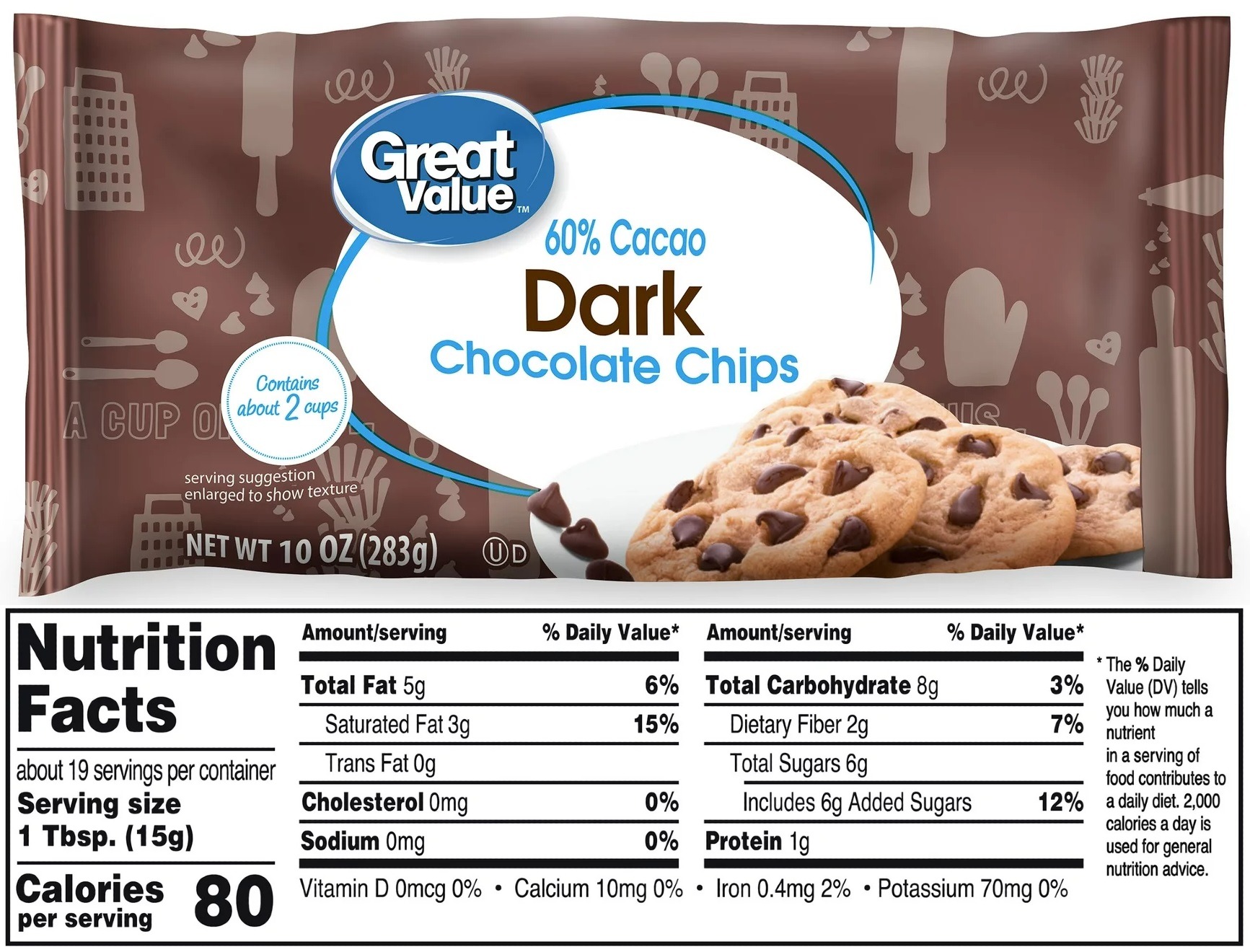
Certainly be wary of anything claiming to be “dark” chocolate without even listing a cocoa percentage, as it’s probably just barely higher than most milk chocolates. I’d say at minimum, you should opt for anything over 70% to be considered healthy. Higher cocoa percentages mean lower sugar content, going all the way up to 100% for the most bitter and strong flavor. Personally, if I’m eating a piece of chocolate, I like 90% or higher; sometimes I enjoy a 100% bar of chocolate; unsweetened and delicious (just work your way up to it; it can be quite bitter if you’re used to typical candy).
A bar of chocolate is typically made of of 3 parts. Firstly, the cocoa powder itself, which gives it bitter chocolate flavor. Second, is some sort of saturated fat (typically cocoa butter), which mixes with the cocoa powder and allows it to stay solid at room temperture. Stop here, and you have unsweetened chocolate; otherwise, add sugar (the third part) to make it sweeter.
Instead of paying $3.37 for 100% Chocolate, I can make it myself for just $0.94. I prefer to make my own Sugar Free Chocolate Bar by mixing together equal parts (by weight) of cocoa powder and coconut oil. Sweetener is optional; sometimes I like a little honey or maple syrup to make it more like 85-90% chocolate, or sometimes I leave it at 100%. If you want it sweeter without and sugar, you should try using carob powder (though it is more expensive), which tastes just like chocolate, but is midly sweet. I used it for a bar of Chocolate Free Chocolate by combining just coconut oil and carob powder for a taste very similar to an 85% bar.
Sources
- 10 ‘Healthy’ Foods That Are Worse Than You Think
- Yogurt to salad dressing: Top 10 trap foods and how to avoid them
- What foods are commonly mistaken as healthy?
- 68 ‘Healthy’ Foods That Are Terrible for You
- Fake Healthy Foods: 6 Foods We Think are Healthy
- 9 Health Benefits of Eating Oats and Oatmeal
- 8 Health Benefits of Nuts
- Added Sugars
- The truth about juice
- What does caffeine do to your body?
- Every Starbucks Coffee Drink - Ranked by Sugar Content
- 5 Ways That Drinking Milk Can Improve Your Health
- Does microwave popcorn cause cancer?
- Here are 17 Snacks You Never Knew Were Vegan
- Is White Rice Healthy or Bad for You?
- 5 of the Healthiest Florus for Every Purpose
- Whole Wheat vs. White Flour
- Irish Supreme Court Rules That Subway Bread Has Too Much Sugar to Count as Actual Bread
- 7 Proven Health Benefits of Dark Chocolate
- Dark chocolate health benefits? The good and the bad to this sweet treat
- What are flavanols?
- 8 ‘Healthy’ Sugars and Sweeteners That May Be Harmful
- Habitual Fructose Intake Relates to Insulin Sensitivity and Fatty Liver Index in Recent-Onset Type 2 Diabetes Patients and Individuals without Diabetes
- Coconut Sugar: A Healthy Sugar Alternative or a Big, Fat Lie?
- 6 Reasons Why High-Fructose Corn Syrup Is Bad for You
- Low Dose of Sucralose Alter Gut Microbiome in Mice
- What Are Sugar Alcohols, and Are They a Healthy Sugar Swap?
- Everything You Need to Know About Stevia
- Monk Fruit Sweeteners: Good or Bad?
- Is Allulose a Healthy Sweetener?
- Sucralose (Splenda): Good or Bad?
- 12 Low-Fat Snacks That Are Actually Unhealthy
- 10 ‘Low Fat’ Foods That Are Low In Nutrients
- Seed Oils: Are They Actually Toxic?
- Are Vegetable and Seed Oils Bad for Your Health?
- Margarine or Butter: The Heart-Healthiest Spreads
- Trans fat is double trouble for heart health
- Are Cold Cuts Healthy? Here’s What a Dietitian Has to Say
- Processed meat and cancer: What you need to know
- Sodium Levels of Processed Meat in Australia: Supermarket Survey Data from 2010 to 2017
- The 18 Best Protein Sources for Vegans and Vegetarians
- 7 Health and Nutrition Benefits of Potatoes
- 6 Surprising Health Benefits of Sweet Potatoes
 Poor Man Protein
Poor Man Protein